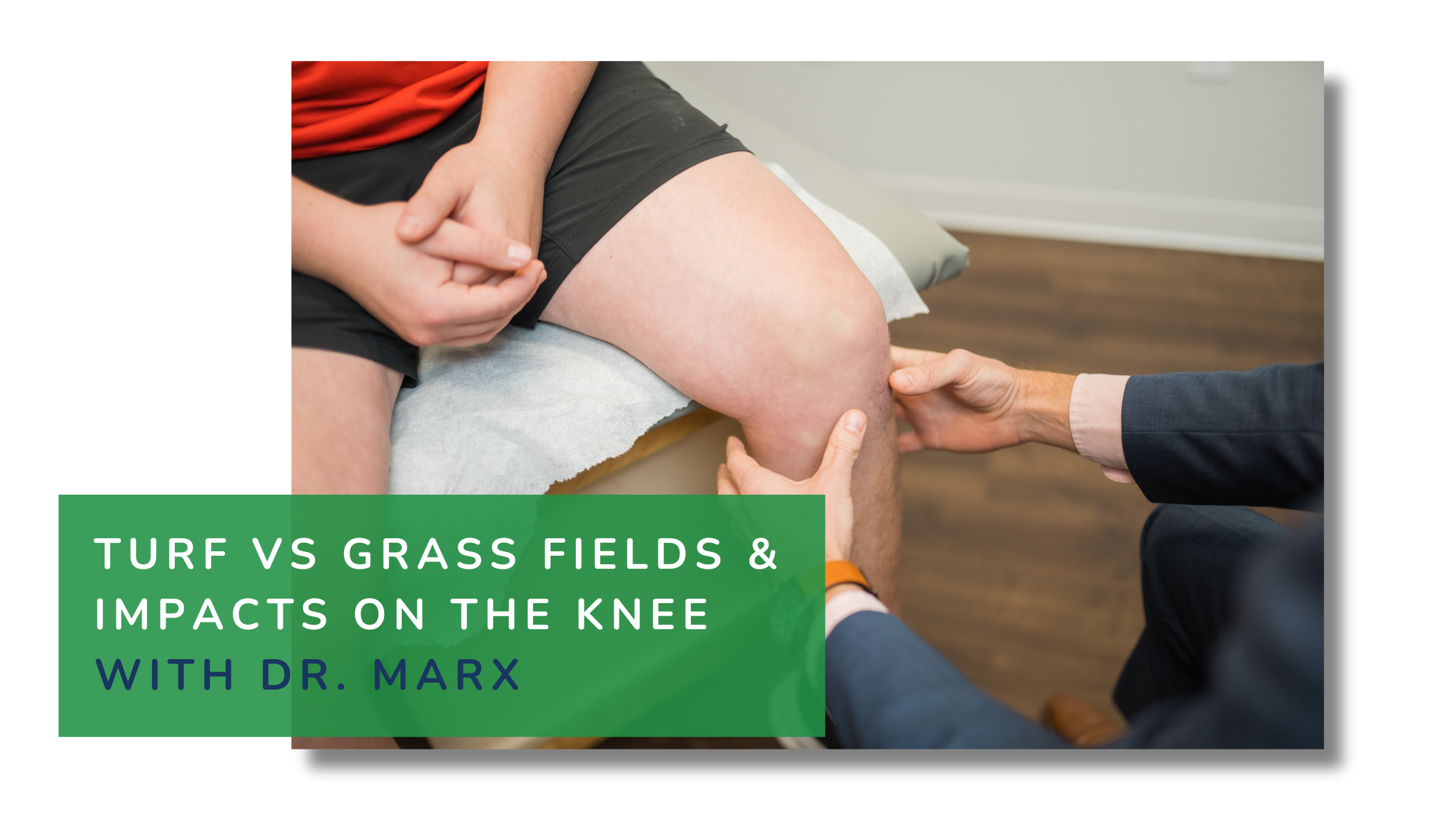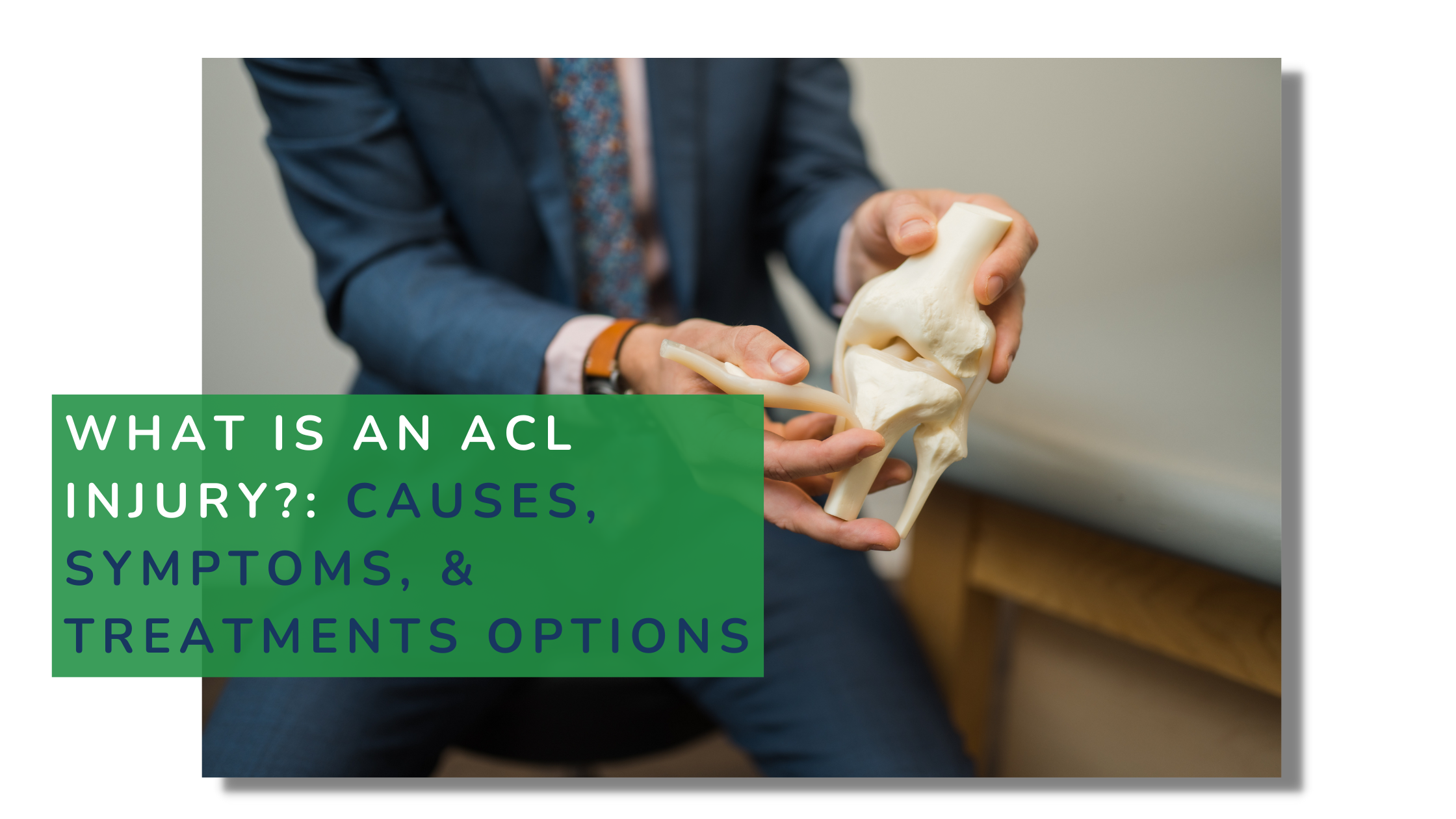
Knee Ligament Treatment in San Antonio
Get back to your active lifestyle!
Anatomy of knee Ligaments
The knee is a complex joint comprised of several ligaments that play a crucial role in providing stability and support. There are four main ligaments within the knee:
Anterior cruciate ligament (ACL): The ACL is a vital ligament in the knee that runs diagonally in the center, connecting the femur (thigh bone) to the tibia (shin bone). It plays a crucial role in providing stability by preventing excessive forward movement and rotation of the tibia relative to the femur
Posterior cruciate ligament (PCL): The PCL is another important ligament located at the back of the knee joint, connecting the femur to the tibia. It prevents excessive backward movement of the tibia and stabilizes the knee during activities.
Medial collateral ligament (MCL): The MCL is positioned on the inner side of the knee and runs from the femur to the tibia. It provides stability to the inner part of the knee and helps prevent the knee from bending inward.
Lateral collateral ligament (LCL): The LCL is situated on the outer side of the knee, connecting the femur to the fibula (the smaller bone in the lower leg). It stabilizes the outer part of the knee and guards against excessive lateral movement.
Causes and risk factors of knee ligament injuries
Understanding the factors that contribute to knee ligament injuries is essential for injury prevention and management. Some common causes of ligament injuries can include:
Sports-related injuries
Participation in high-impact sports increases the risk of ligament injuries due to the abrupt stops, changes in direction, and jumps involved. Overuse in repetitive movements can weaken ligaments over time.
Trauma and accidents
Sudden falls, collisions, or direct blows to the knee, often encountered in accidents or high-impact situations, can result in ligament sprains or tears. Vigilance and protective gear are essential for injury prevention.
Age-related factors
Aging contributes to natural wear and tear on ligaments, reducing their elasticity. Loss of muscle mass and bone density with age can affect joint stability, making ligaments more prone to injury.
Pre-existing conditions
Conditions like hypermobility, arthritis, or muscle imbalances can increase vulnerability to ligament injuries. Identifying and addressing these factors through targeted interventions is crucial for injury prevention.
By recognizing these contributing elements, individuals can adopt tailored strategies, whether through targeted exercises, protective measures, or lifestyle adjustments, to safeguard the integrity of their knee ligaments and promote long-term joint health.
What are the symptoms of a knee ligament injury?
There are various ways knee ligament injuries manifest, ranging from noticeable discomfort to abrupt movement problems. Key indicators associated with these injuries include:
Pain Indicators: Recognize distinct pain patterns associated with various knee ligament injuries. Differentiate between sharp, stabbing pain and persistent, dull discomfort for targeted symptom identification.
Swelling and Inflammation: Understand how ligament injuries contribute to visible swelling and inflammation. Recognize visual and sensory cues indicating these symptoms for proactive self-assessment.
Instability and Joint Feelings: Identify sensations of instability or a feeling of the knee giving way as potential ligament injury signs. Understand how communicating these symptoms aids in accurate medical evaluation.
Weight-Bearing Challenges: Explore difficulties in bearing weight on the affected knee as indicative of potential ligament injuries. Recognize the impact of ligament injuries on daily activities requiring weight-bearing for informed decision-making.
Identifying these symptoms can help you manage knee ligament tears by seeking early intervention and treatment.
What are the treatment options for knee Ligament Injuries?
A range of tailored treatment options are available to patients with knee ligament injuries. The severity of the injury, your overall health, and individual factors shape personalized treatment plans, ensuring a dynamic approach to address specific needs and goals.
Conservative Measures:
Explore conservative approaches like the RICE method (Rest, Ice, Compression, Elevation) for initial management.
Understand the role of rest and controlled movement in promoting healing.
Surgical Interventions:
Understand surgical options, including ligament reconstruction, for severe cases.
Explore the benefits and considerations associated with surgical treatments.
Advanced Technologies:
Discover how cutting-edge technologies are employed for enhanced treatment outcomes.
Explore the use of advanced techniques such as laser therapy and regenerative medicine.
Individualized Treatment Plans:
Recognize the importance of tailored treatment plans based on the specific type and severity of the ligament injury.
Understand how individualized approaches contribute to optimal recovery.
At San Antonio Orthopaedic Specialists, we always explore non-surgical, preservation treatments before considering surgery. Our goal is to empower you with personalized care options that align with your condition, preferences, and overall well-being, ensuring the best possible outcome and a pain-free, active life.
CHECK OUT OUR LATEST BLOG POSTS REGARDING KNEE INJURIES
We try to keep up with our doctors by getting content directly from them and their patients!
Are You Experiencing knee Pain? Let’s get in touch!
We have over 1,000 online reviews!
MEET OUR TEAM KNEE SPECIALISTS
-

Adam I. Harris, MD
Board Certified, Fellowship Trained Orthopaedic Surgeon
-

Brandon Broome, MD
Board Certified, Fellowship Trained Orthopaedic Surgeon








